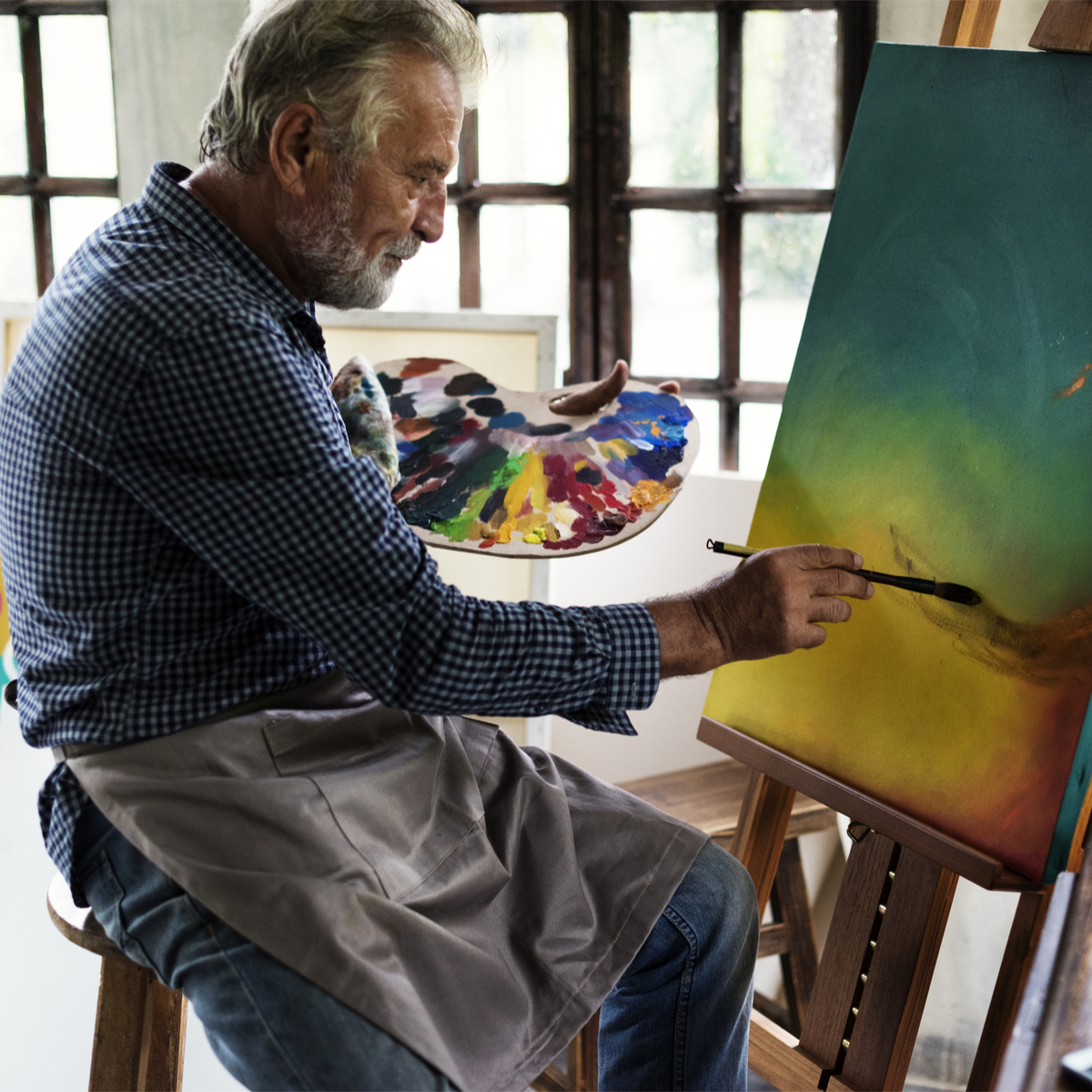Creativity and Aging

Life is full of transitions. As i reflect over my life, I see that some developmental stages I have looked forward to and some not so much. Last year at this time, I was enjoying completion of graduate school and beginning a new practice at Wholeness
Healing Center. It felt like a very positive transition.
Most recently, I have noticed the discussion in the media about the generations of the baby boomers as they begin their transition to retirement. In my social work graduate program, I had the opportunity to be a LEGEND (Learning Experience
with the Geriatric Elderly Needing Delivery Systems) which focuses on the older adult. So enjoying working with older adults and having studied public policy and learning effective interventions for older adults, I listened.
I am also aware (because of my birth year of 1963) that I am in the baby boomer generation. There seem to be a lot more jokes about “getting old” and I am in the process of planning a 50th birthday party for my husband. I ponder my own life and
wonder what does happen after the black streamers are taken down and the party is over?
One thing that is different for the baby boomers is they have the experience of seeing many older adults living rich and
fulfilling lives. Only a small percentage of older adults live in nursing homes in the United States. But still, throughout history
and throughout the world, whole industries have developed to aid in reversing the aging process. The answer has been sought
from pilgrimages, to pills and herbs, to contraptions and devices, to injections of grafts, blood and glands. Today there are
numerous products, for example, when selecting skin lotion, that most likely will include an anti-aging formula.
There are many theories about why we age. All the theories don’t seem to help me live with the transition from middle life to older adulthood. The field of study of gerontology “has shifted from what aging is, to what is possible with aging, and to now, what is possible, not despite aging, but because of it” (Coehn, 2000, p. 5). Gene Cohen, MD, PhD is a researcher and a geriatric psychiatrist whose thirty years of research shows that later in life creativity is not the exception but the rule. His work helps people in the second half of life awaken the partnered powers of age and creativity to find a new sense of possibility. (Cohen, 2000) For Cohen four aspects of creativity stand out:
- Creativity strengthens our morale in later life. Creativity allows us to alter our experience of problems and sometimes
to transcend them in later life. The nature of creativity is its engaging and sustaining quality — we feel better when we see it fresh. Creativity makes us more emotionally resilient and better able to cope. Not unlike exercise for our muscles, when we are creatively engaged, our emotional tone is elevated. - Creativity contributes to physical health as we age. Research shows that the mind, body and spirit are connected and that one aspect affects the other. Creativity has the effect of overall well-being. Just as chronic stress has a negative effect, creativity has a positive effect by promoting expression of emotions and a boost in how our body takes care of itself.
- Creativity enriches relationships. The modeling of the use of creativity to adult children helps to show a positive view of
aging as well as to continue to engage the older adult in the family relationships. - Creativity is our greatest legacy. We model what is possible for our children, grandchildren, great grandchildren, coworkers, neighbors, and society as a whole. Older adults historically are “keepers” of the culture by passing down
stories, traditions and ways of living.
Let’s begin. How could we be creative? Notice your dreams. Write them down or develop a dream journal. Plant a flower.
Write a recipe and share it. Write a letter and send it. Explore a new activity. Journal your daily thoughts. See a movie. Plan and invite a younger person for dinner.
I am now becoming excited about the second half of life. I see the potential and do not dread the day after the black streamers
are thrown away. I now see the opportunity to be my best self and I look forward to the possibilities with each birthday.
Works Cited
Coen, G. (2000). The creative age. New York, NY: Random House.
Tags: creativity contributes to physical health, creativity for alder adutls, creativity for the elderly, creativity strengthens our morale, living a rich life as you grow olderABOUT THE AUTHOR

Jodi Studnicka
Licensed Clinical Social Worker
Licensed Mental Health Practitioner
Advanced Clinical Hypnotherapist
Spiritual Director- Jodi Studnicka completed her practicum at Wholeness Healing Center in the Grand Island and Broken Bow offices. Jodi Studnicka, LCSW, LMHP joined Wholeness Healing Center in May 2011 after receiving her Master’s of Social Work from the University of Nebraska Omaha.
LATEST ARTICLES BY Jodi Studnicka
Subscribe today
Sign up to receive the latest mental health tips and inspiration